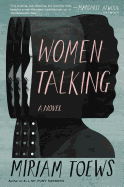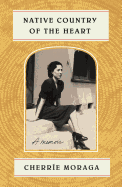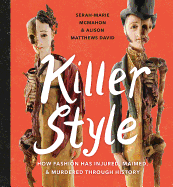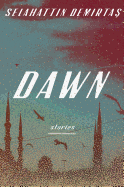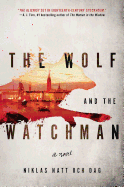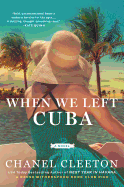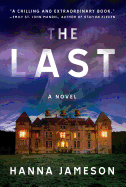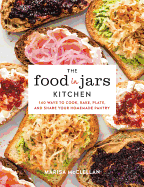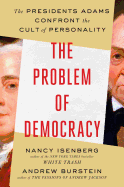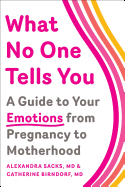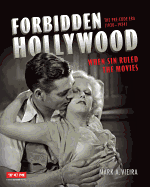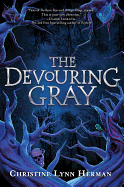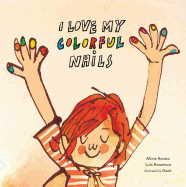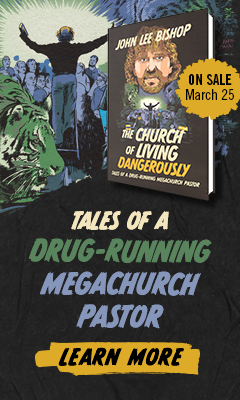Week of Friday, April 26, 2019
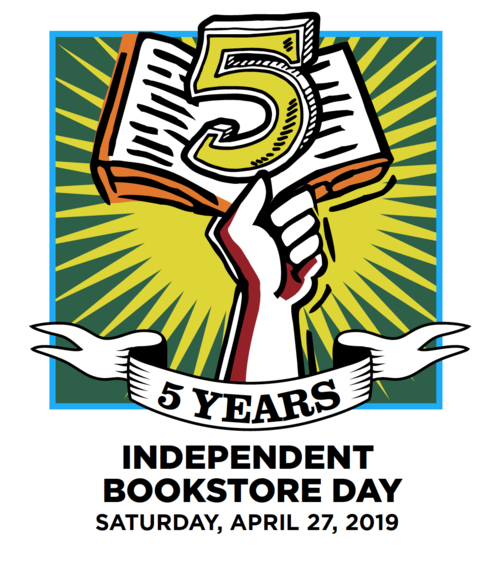 Tomorrow is Independent Bookstore Day, a "national party that takes place at indie bookstores across the country on the last Saturday in April. Every store is unique and independent, and every party is different. But in addition to authors, live music, cupcakes, scavenger hunts, kids events, art tables, readings, barbecues, contests, and other fun stuff, there are exclusive books and literary items that you can only get on that day. Not before. Not after. Not online."
Tomorrow is Independent Bookstore Day, a "national party that takes place at indie bookstores across the country on the last Saturday in April. Every store is unique and independent, and every party is different. But in addition to authors, live music, cupcakes, scavenger hunts, kids events, art tables, readings, barbecues, contests, and other fun stuff, there are exclusive books and literary items that you can only get on that day. Not before. Not after. Not online."
Words to live by. I'm sure you have a favorite independent bookstore and already know how great it is. Think of tomorrow as a superb excuse to indulge guilt-free in one of your favorite pastimes--hanging out in your indie and celebrating with a wonderful community of fellow readers.
In anticipation of this special day, I've been thinking about a Colonial-era bookshop owner named Henry Knox, who arguably put the "I" in independence for booksellers. Born in 1750, he opened the London Book-Store in Boston at the age of 21. According to an announcement in the Boston Gazette, his bookshop featured "a large and very elegant assortment of the most modern Books in all branches of Literature, Arts and Sciences."
A prominent Bostonian described the London Book-Store as "one of great display and attraction for young and old, and a fashionable morning lounge." Patrons included Tories as well as troublemakers, like John Adams and Nathanael Greene.
Knox went on to become a Revolutionary War hero, playing an instrumental role when he conceived and executed the daring relocation of more than 50 mortars and cannons overland from Fort Ticonderoga on Lake Champlain to Boston, an arduous winter journey of nearly 300 miles. He later served in President George Washington's Cabinet.
Every era is complex. Indie bookstores matter, offering readers, authors and booksellers a community gathering space for the exchange of ideas. It's still a revolutionary concept. Happy Independent Bookstore Day 2019! --Robert Gray, contributing editor
Women Talking
by Miriam Toews
Miriam Toews (All My Puny Sorrows) begins her seventh novel, Women Talking, with a note that the book is both based on a true story and "an act of female imagination." In this tragically relevant yet wryly humorous novel, the women are discussing three options for their futures: (1) do nothing, (2) stay and fight or (3) leave.
Between 2005 and 2009, in a remote Mennonite colony of Canadian émigrés in Bolivia, hundreds of girls and women were raped in their sleep. Ghosts and demons were blamed, but eventually eight men from the colony were found guilty of the assaults.
The novel imagines eight women maximizing the few days when the men are in the city working for the release of the arrested attackers. August Epp, who teaches the colony's male children and is shunned by the men, is the book's narrator, asked to take notes at the hayloft meeting, since women are kept illiterate by the patriarchy. As three generations from two families argue the options, their idiosyncrasies surface. Sisters Mariche and Mejal openly roll and smoke cigarettes; Mejal's teen daughter and her friend frolic on the meeting's edges. Toews tempers the horror of the situation with these antics as the group determines, "We want our children to be safe. We want to keep our faith. And we want to think."
With no knowledge of the world beyond their colony, unable to speak the country's language and few resources, the women of Molotschna are brave for even considering an escape. Toews's imagining of their desperation is a timely story made accessible by her unflinching yet humorous telling. --Cheryl Krocker McKeon, manager, Book Passage, San Francisco
Discover: This chilling novel, leavened with notes of humor, is based on actual attacks on women in a remote Mennonite colony in Bolivia.
Dawn
by Selahattin Demirtas
Dawn breaks with a resounding call to leaders around the world. Formerly a leader of the Peoples' Democratic Party in Turkey, Selahattin Demirtaş has been imprisoned since 2016 for fighting for human rights. Since his detainment at Edirne, he has campaigned for president and also written this short story collection. Refracting fiction to reality and back again, Dawn spins a delicate chain of reactions. Ordinary moments drip with precariousness and create friction within an oral storytelling sensibility. In "Seher," a woman pins her hopes on a colleague, a fixation that unravels her family. The sensible protagonist in "Nazan the Cleaning Lady" exits her bus to walk when the road is blocked and finds herself in the middle of a heated protest. "The Mermaid" traces a truncated Syrian lineage. Multiple narrators in the collection fixate on women from passing glances, from afar or from memory that give their subjects varying degrees of autonomy.
Dawn draws the topography of Turkish experiences, giving shape to a map of emotion and possibility in the ordinary. Each story is enveloped with the presence of women, whether situated as the narrator or the subject of observation. By focusing on the quotidian, Demirtaş mirrors a world where not a single person is untouched by human rights violations. It is the cause for irrevocable change. Marrying literature and politics, Dawn colors life with its complexities in this soft yet volatile collection. --Amanda Ibarra, events manager, Flyleaf Books, Chapel Hill, N.C.
Discover: Life echoes political moments in this striking collection from an imprisoned Turkish human rights leader.
The Wolf and the Watchman
by Niklas Natt och Dag
Night watchman Mickel Cardell is woken on an autumn night in 1793 by two children who tell him that they have discovered a body in the lake. Expecting an animal carcass or some other refuse, he gamely peels his face off the sticky bar-room table and goes to investigate. When Cardell wades into the putrid stew of butchers' scraps and muck and fishes out a mutilated corpse, he sets off an investigation that will take him, along with idealistic lawyer Cecil Winge, into poorhouses, drawing rooms and bordellos, and across the spectrum of Stockholm society.
The Wolf and the Watchman was named Best Debut Novel of 2017 by the Swedish Academy of Crime Writers, and author Niklas Natt och Dag shows a remarkable talent for breathing life into his setting and characters. With a handful of details, he paints a gritty and visceral picture of life in the teeming streets and back alleys of late-18th century Stockholm. Main characters Winge and Cardell are a fascinating juxtaposition of reason and emotion, and Cardell is an especially compelling figure, equal parts clownish drunk and damaged soldier. The setting, characters and an intricate plot are woven together in a nonlinear structure that flits in and out of flashbacks and multiple perspectives. It shouldn't work, and yet does spectacularly, deepening characterization and sharpening individual voices. This is an excellent debut by a talented new author. --Judie Evans, librarian
Discover: In this exciting first novel, an unlikely pair hunt for a killer in the shadows of 18th-century Stockholm.
When We Left Cuba
by Chanel Cleeton
Chanel Cleeton gives readers an atmospheric glimpse into the complex Cuban-American relations of the 1960s in When We Left Cuba. Forced to flee Havana with her family when Fidel Castro seized power, Cuban sugar heiress Beatriz Perez is bored and restless in 1960s Palm Beach. While her mother worries over marrying off her daughters and her father buries himself in work, Beatriz longs for a greater purpose to her life, especially one that will include Castro's downfall. Then she meets Nick, a handsome young U.S. senator who's both irresistible and absolutely wrong for her. Soon after, Beatriz is approached by the CIA to aid them in a plot to kill Castro. But the Americans' involvement is more troubling than it first appears.
Beatriz, a secondary character in Cleeton's Next Year in Havana, takes center stage here, narrating her own story with occasional flashes forward to Castro's death in 2016. As Beatriz struggles with her feelings for Nick and their conflicting ambitions, she also wrestles with the competing pull of duty to her family, love for her homeland and her own thirst for independence. Her CIA job provides income and a shot at bringing down Castro, but what she really wants is the chance to create a life that's entirely her own--with or without Nick. With rich historical detail, incisive dialogue and a firebrand heroine, Cleeton paints a vivid portrait of a woman caught in the currents of a turbulent time yet determined to make her own way. --Katie Noah Gibson, blogger at Cakes, Tea and Dreams
Discover: A Cuban socialite struggles to gain independence, love and revenge in 1960s Florida.
Mystery & Thriller
The Last
by Hanna Jameson
American historian Jon Keller is stranded in a Swiss hotel along with 20 others after nuclear explosions destroy much of the United States. A dystopian nightmare follows, but Keller's first thought is shame that he ignored his wife's last text message. Then, his thoughts turn to survival--and an unexplained death. The Last by Hanna Jameson (Something You Are) is a murder mystery cloaked in a brisk post-apocalyptic thriller.
As weeks pass, Keller chronicles the group's struggle in a journal he cannot know will ever be read. "History is only the sum of its people and, as far as I know, we could be the last ones," he writes. Then, on the 50th day, the body of a young girl is discovered in a rooftop water tank. Keller becomes obsessed with her death and decides to uncover the murderer, who must be among them, he thinks. "My trust with the group is fractured.... Everyone now is a potential suspect."
The Last is elevated from a typical closed-room murder mystery to something more existential. As time goes by, the once orderly group begins to disintegrate, individual survival is paramount, and Keller, anguishing over the fate of his family in the U.S, finally decides, "They couldn't be what preoccupied my mind. They weren't here. It was only myself I had to keep alive." Readers of Ben Winters's Last Policeman trilogy will enjoy this, and may want to revisit William Golding's Lord of the Flies, the modern classic story of civilization vs. individual survival. --Cindy Pauldine, bookseller, the river's end bookstore, Oswego, N.Y.
Discover: The Last, a tightly plotted dystopian murder mystery, asks how far individuals are prepared to go to survive in post-apocalyptic times.
Food & Wine
The Food in Jars Kitchen: 140 Ways to Cook, Bake, Plate, and Share Your Homemade Pantry
by Marisa McClellan
Marisa McClellan is a food writer and canning teacher. Her fourth book, The Food in Jars Kitchen, follows Naturally Sweet Food in Jars, which cleverly showcased natural alternatives to refined sugar.
The Food in Jars Kitchen focuses on the full lifecycle of jams, jellies, chutneys and pickles. It matters not whether your jar of preserves is homemade, a present or bought from a store or farmers market; the only thing McClellan wants to know is: What do you plan to do with it? Here she offers a bounty of ideas that will inspire creativity in the kitchen, including recipes for brunch, breads, snacks, soups, braises and roasts, as well as an abundance of desserts, drinks and frozen treats. Each recipe highlights a recommended preserve along with innovative alternatives and little tips to adapt the formula for different tastes.
McClellan (Food in Jars: Preserving in Small Batches Year-Round) is partial to tangy flavors and crunchy textures. Her famous potato salad is a pickle-lover's dream, as is the robust Russian dressing from the McClellan family's 20th-century Russian tearoom in Philadelphia. Pizza toppings include sweet and savory combinations such as peach jam with goat cheese and Concord grape butter with Camembert. A deceptively simple jam vinaigrette is delicious on salads.
For newcomers to the Food in Jars universe, it's reassuring to learn that the recipes featured here were cross-tested by a panel of home cooks and canners to render them as foolproof as possible. A Meyer lemon and marmalade martini, anyone? --Shahina Piyarali, writer and reviewer
Discover: This adventurous collection of recipes from the founder of the popular Food in Jars blog is designed to make the most of pantry staples.
Biography & Memoir
Native Country of the Heart
by Cherrie Moraga
"How to explain the complexity of this? What it means to be not just me but us." Cherríe Moraga asks this--of herself, of her readers, of the world at large--in the prologue to Native Country of the Heart. In the subsequent pages, she documents her coming-of-age as a "Mexican, mixed-blood, queer, female, almost-Indian." But any history of herself, she reasons, is also a history of "she"--her mother, Elvira, who was hired out as a farmhand by her father as a child. Who had an undefined relationship with her white male boss as a teenager. Who both loved and suffered through her marriage to Moraga's father as an adult, and whose role as mother--to the author and her two siblings--is complicated, messy and full of heartache.
Moraga (editor of This Bridge Called My Back: Writings by Radical Women of Color) reflects on her adolescence, and she weaves together her story of growing up with her mother's slow decline into Alzheimer's. As she does so, Native Country of the Heart shifts from pure memoir to something much larger. It's a documentation of a mother and daughter's relationship, true, but also a grappling with the legacy of white American colonialism and the long-fingered reach of historical violence through generations. It does what the best memoirs can do: offers a glimpse into one particular life, but in a way that allows readers to see the world in a slightly different light after turning the last page. --Kerry McHugh, blogger at Entomology of a Bookworm
Discover: In an emotional coming-of-age memoir, an acclaimed activist considers her relationship with her mother during the older woman's decline into Alzheimer's.
History
The Problem of Democracy: The Presidents Adams Confront the Cult of Personality
by Nancy Isenberg and Andrew Burstein
American politics celebrates (and often rewards) style over substance. While this may seem to be a recent byproduct of celebrity-obsessed culture, The Problem of Democracy demonstrates, through the lives of second and sixth presidents John Adams and John Quincy Adams, how the cult of personality has always trumped democracy.
Nancy Isenberg (White Trash: The 400-Year Untold History of Class in America) and Andrew Burstein (The Passions of Andrew Jackson) note that both men believed in representative democracy--the concept that a select, educated electorate should choose the most accomplished candidate for the presidency. Father and son also felt "the right ideas had to sway the most people." Yet these principles weren't enough for either Adams to win re-election. They were defeated by Thomas Jefferson and Andrew Jackson, respectively--candidates who invented "public identities in order to acquire attention and impress voters." Furthermore, Jefferson's and Jackson's outsized personalities were bolstered by large followings and the enthusiastic support of the national media.
Image-making, Isenberg and Burstein argue, is the true American political heritage. The Adamses identified it in their respective opponents and, to their detriment, emphatically criticized the "ecstatic, celebratory, self-congratulatory script that grew into the political faith we know as American exceptionalism." Isenberg and Burstein remind us of the importance of recognizing and remembering that the cult of personality is not a new phenomenon in American politics, and has long been a determining factor. --William H. Firman Jr., presidential historian and writer
Discover: Nancy Isenberg and Andrew Burstein show how the influence of personality has been part of American politics since the days of the founding fathers.
Parenting & Family
What No One Tells You: A Guide to Your Emotions from Pregnancy to Motherhood
by Alexandra Sacks and Catherine Birndorf
There's no shortage of pregnancy books on the market, covering what to eat, what to expect and what to sing to your baby over the course of nine months. But few address the emotional wellbeing of pregnant people--a gap What No One Tells You aims to fill with a comprehensive, scientific account of the emotional journey from pregnancy through early motherhood. Reproductive psychiatrists Dr. Alexandrea Sacks and Dr. Catherine Birndorf set out to debunk the "hazardous" and "dangerous" myth that babies and motherhood equate to the "ultimate happiness," acknowledging instead the emotional ups and downs that come with pregnancy, and the many ways new parenthood might leave individuals "feeling lost between who they were before and who they think they should be now."
Sacks and Birndorf break matrescence--the act of becoming a mother--down into trimesters, with additional chapters on labor and delivery, and the first year of parenthood beyond the so-called "fourth trimester." Each section provides explanations of what expecting mothers might feel, coupled with practical advice on how to manage those feelings (and when it might be appropriate to seek additional medical support from a doctor or therapist). Written in a personable style, What No One Tells You is packed with science but never reads like an academic text. Instead, it's like getting support from a trusted friend who's finally willing to clue you in to what pregnancy is really like, imperfections and all, so expecting parents might be better equipped to figure out "how to hold on to [themselves] along the way." --Kerry McHugh, blogger at Entomology of a Bookworm
Discover: A pair of reproductive psychiatrists offer a friendly and accessible guide to the emotions of pregnancy, from conception through a baby's first year.
Art & Photography
Forbidden Hollywood: The Pre-Code Era (1930-1934) When Sin Ruled the Movies
by Mark A. Vieira
At first glance, film historian Mark A. Vieira's Forbidden Hollywood looks like a beautiful coffee-table art book filled with some never-before-seen vintage film stills. But on closer examination, it's revealed to be an illuminating, superbly researched treasure trove of Hollywood history and gossip.
In the late 1920s, the film industry created a production code to avoid local censorship in various U.S. communities. Many filmmakers ignored the code and accelerated the depiction of sexual innuendo, violence, prostitution, drug use, sexual infidelity and homosexuality. The industry finally clamped down on things in 1934, with the creation of the Production Code Administration that was enforced until 1968. Forbidden Hollywood profiles dozens of films created between 1930 and 1934 that broke through censorship guidelines--and were usually rewarded with huge audiences. In 1930's The Divorcee, Norma Shearer sleeps with her philandering husband's best friend and tells him, "From now on, you're the only man in the world my door is closed to!" In 1932, Howard Hughes produced Scarface with an incest subplot and a death toll of more than 40 people. In 1933's Search for Beauty, Ida Lupino uses binoculars to check out Buster Crabbe's bulging swimsuit and, later, a half-dozen naked men wander through a locker room. Other profiled films that ignited the stricter production code include She Done Him Wrong, Tarzan and His Mate, Frankenstein, The Sign of the Cross and Baby Face.
Forbidden Hollywood is a real treat for film buffs. The hundreds of photos are dazzling and evocative, and Vieira's history lessons are compelling and fresh. --Kevin Howell, independent reviewer and marketing consultant
Discover: A dazzling, photo-filled profile of numerous racy, violent and provocative pre-Code films that ignited stricter censorship in motion pictures.
Children's & Young Adult
Killer Style: How Fashion Has Injured, Maimed, and Murdered Through History
by Serah-Marie McMahon and Alison Matthews David, illus. by Gillian Wilson
People have long done outrageous things in the name of style. But, as Serah-Marie McMahon and Dr. Alison Matthews David (scholar of textile and dress) prove in their fascinating illustrated history, Killer Style, fads and fashions don't have to be absurd to be fatal. They explain in their introduction, "At the most basic level, we rely on clothing to protect us in our daily lives.... But you might be surprised to find out that from the tops of our heads to the tips of our toes, the things we put on to look good can turn out to be very, very bad."
The fashion-investigating duo highlights the horrifying effects of mercury in felt hats, celluloid in hair combs, radium in watches and lead in makeup. They relate tragic tales of accessories: scarves strangling, corsets disfiguring and pajamas bursting into flames. McMahon and David even illustrate the lengths to which people have gone, regardless of safety, to look chic--high heels, anyone? Each topic includes examples, photos and eerie illustrations by Gillian Wilson. A fun sidebar accompanies most spreads, adding related information, like current pop culture references to green--Green Goblin, Mojo Jojo and Mister Yuk--connected to the pigment that was originally created from arsenic in the 18th century.
Killer Style is gruesomely intriguing but also enlightening in the transformations the fashion industry has experienced as a result. Geared to middle grade readers, this is a fun way to remind youngsters to value their health and safety above their appearances. --Jen Forbus, freelancer
Discover: A writer and a scholar join forces to chronicle the many ways that the quest for beauty can kill, maim or injure.
The Devouring Gray
by Christine Lynn Herman
About 200 years ago, the founders of Four Paths, N.Y., trapped a Beast in a netherworld connected to their town. It is now up to their descendants to keep the town safe. Unfortunately, "the Gray [has] grown bolder this year, luring victim after victim into its world." Three have already died, their "eyes bleached the color of milk.... rib cage inverted, bones slicing through bloated skin." Justin Hawthorne, son of the sheriff, believed that when he came into his powers, he would singlehandedly end the scourge of the Gray. His younger sister, May, and friend Isaac (the only remaining member of the Sullivan founding family) passed their "rituals" and now display immense magical talents--Justin, however, failed. His mother believes the town will lose faith in their family if anyone learns he is powerless, so Justin keeps his shame a secret. There is one person in whom Justin could confide: Harper Carlisle, the eldest daughter of the third founding family. But Harper failed her ritual before Justin attempted his and, at his mother's insistence, Justin turned his back on her.
Then, Violet Saunders and her mother move into town. Believed to be a "dead branch of the bloodline," the Saunders' arrival seems to provoke the Gray, making the danger grow. The malevolent energy present in Four Paths pulses through the book, building a sense of dread that intensifies as this moody, dark work reaches its conclusion. Fans of Cassandra Clare or Kami Garcia and Margaret Stohl's Beautiful Creatures series should certainly pick up this entrancing YA debut. --Siân Gaetano, children's and YA editor, Shelf Awareness
Discover: The Devouring Gray is a gothic fantasy debut featuring teens who must fight a monster trapped by their ancestors.
I Love My Colorful Nails
by Alicia Acosta and Luis Amavisca, illus. by Gusti
Ben is a little boy who "loves painting his nails." Because he "loves his colorful nails" so much, Ben is perfectly happy to paint them anytime, with his family or with friend Margarita. That is, until two boys at school taunt him: " 'Painting your nails is for girls.' 'You're a girl! You're a girl!' " Ben feels sad even though, when he finally tells his parents about the jeers, his dad defends his choices. "I'm also a boy," he says, then asks Ben to hand him the orange polish. Even a beloved parent's support can't stop Ben's despair when the boys again make nasty remarks. Margarita tries to stop them, but the damage is done.
While his dad proudly shows off his painted nails, Ben wears polish only on the weekends, fearful "the kids at school [will] laugh at him again." When Ben's birthday comes around, though, he gets a big surprise: everyone in his classroom, teacher included, has painted their nails in "bright, cheerful colors... cheerful just like Ben."
Alicia Acosta and Luis Amavisca wrote ¡Vivan las uñas de colores! (one of few available books on gender identity issues in Spanish); Ben Dawlatly translated the book for the English-speaking audience. In exuberant illustrations, Gusti uses a strong, playful brown line and warm swathes of color to depict Ben's loving, contemporary family (along with adorable cat), his multiracial classroom and the streets of his city. While the text doesn't tell us how the ending comes about, it still highlights how loving family members, friends and educators can effect change. --Melinda Greenblatt, freelance book reviewer
Discover: Ben is upset when boys make fun of his painted nails, but loves it when his whole class polishes their nails on his birthday.
| the church of living dangerously |
|


